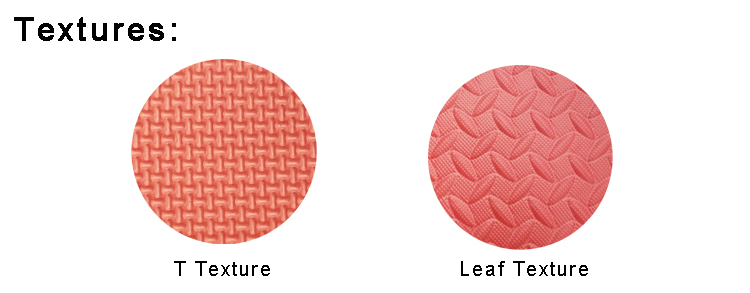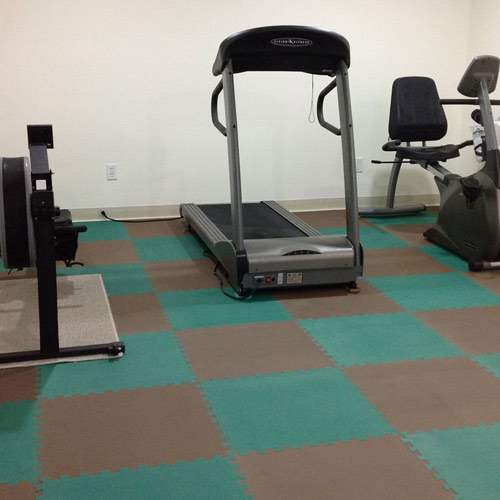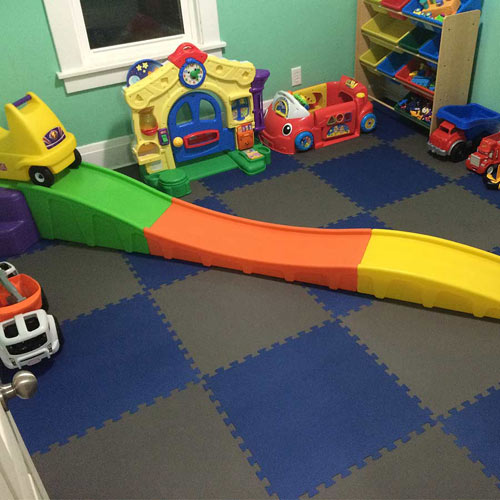Experimental study on comprehensive utilization of low grade manganese ore and industrial waste hydrochloric acid
I. Introduction
Geological reserves of manganese ore resource with economic value reached 302 million t, accounting for No. 7 in the world. The reserves of manganese ore resources in Guizhou Province ranks third in the country. It is characterized by rich ore, many miscellaneous ore, thin ore, fine grain size, difficult to collect, difficult to choose, severe shortage of rich ore, average manganese content of 21.14%, finished ore. The average manganese grade is less than 30%, and its resource utilization rate is severely limited. At the same time, with the continuous increase of resource prices, the decline of manganese ore grade has increasingly restricted the further development of manganese industry. A large amount of waste hydrochloric acid is produced in the production of titanium sponge and chlor-alkali industrial production. If the waste hydrochloric acid is discharged, it will cause huge waste of resources and will seriously pollute the surrounding environment. Therefore, in order to achieve better utilization of resources, reduce the production of “three wastesâ€, and achieve the goal of clean production, this experiment studied the use of a large amount of waste hydrochloric acid and low-grade rhodochrosite produced in the production process of titanium sponge and chlor-alkali industry as raw materials. Take manganese chloride.
Second, the test part
(1) Test materials
The chemical composition of rhodochrosite and hard manganese ore used is shown in Table 1, which is characterized by high iron and high calcium.
Table 1 Raw material composition %

(2) Experimental methods and processes
In the experiment, the wet leaching method was adopted, and the waste hydrochloric acid and the rhodochrosite were prepared into a leaching solution according to a certain liquid-solid ratio under heating and stirring conditions, and then filtered and purified to obtain a manganese chloride product. The specific process is shown in Figure 1.

Figure 1 Process of industrial waste hydrochloric acid leaching of manganese ore
(III) Experimental principle and process
1. Leaching experiment principle and process. Manganese is mainly present in the manganese ore in the form of manganese carbonate. Therefore, the reaction of rhodochrosite with hydrochloric acid is one of the metathesis reactions, which is the basis for extracting manganese from the rhodochrosite with waste hydrochloric acid. The main chemical reactions in this process are as follows:

The standard Gibbs free energy ΔG of the above reaction in the standard state can be obtained by thermodynamic calculation. ≤ -42.89 kJmol, it can be seen that the above reaction can be carried out not only spontaneously but also thoroughly. From the kinetic point of view, the system is a multi-phase reaction and an interfacial chemical reaction process. During the whole reaction process, the solid-liquid contact area can be increased by heating, stirring, etc., so that the reaction is sufficient, so the kinetics are also A good reaction effect can be obtained.
The leaching experiment is carried out in a glass beaker, adding the quantitative rhodochrosite and water to a certain solid-liquid ratio, stirring uniformly, and heating to 70-90 °C. Then, using a timed fractional acid addition method, adding the required amount of hydrochloric acid, and adding an appropriate amount of hard manganese ore powder, the Fe 2+ in the solution is oxidized to Fe 3+ , and when the reaction is nearing the end, an appropriate amount of lime water is added to raise the pH of the solution to 5-6, Fe 2+ in the solution is oxidized to Fe 3+ , and hydrolyzed to colloidal Fe(OH) 3 and filtered.
2. Purification experiment principle and process. Into the leaching of low grade industrial waste hydrochloric acid was added manganese chabazite prepared manganese chloride solution of the metal manganese powder, most elemental manganese metal ions in solution (including Fe 2+, Fe 3+, Pb 2+ , Co 2 The reaction of + , Ni 2+ , Cu 2+ , Zn 2+ , etc. forms a precipitate and is removed. The reaction is as follows:
Me n+ +Mn=Mn 2+ +Me
In the formula, Me represents various metal ions such as Fe 2+ , Fe 3+ , Pb 2+ , Co 2+ , Ni 2+ , Cu 2+ , Zn 2+ in the solution .
When the oxidized and reduced substances participating in the reaction are not in the standard state, the electrode potential values ​​of the respective pairs under the given conditions should be obtained according to the Nernst equation and then compared and judged. When the influence of the concentration (or partial pressure of gas) on the electrode potential is not too large, if the difference between the standard electrode potentials of the two pairs is greater than 0.2 V, the standard electrode potential can still be used to judge the direction of the redox reaction.
Subsequently, 2 to 3 g of metal manganese powder was added to the filtrate, stirred, and heated to more than 80 °C. The resulting heavy metal precipitate was filtered, and then the pH was controlled between 4 and 5 at 80 ° C, and the stirring speed was controlled at about 100 r/min. A hot solution of MnSO 4 was added to the filtrate, and filtered for 1 hour.
Third, the experimental results and discussion
(1) Leaching experiment results
Through the exploratory experimental stage, comprehensive consideration is given to the choice of using hard ore as the oxidant. The pH value during the reaction is controlled at 0.5-1.0, while the pH at the end of the reaction is controlled at 5-6. On the one hand, it is beneficial to increase the leaching rate of rhodochrosite, on the other hand, it can remove iron in the leaching stage and reduce the subsequent purification process. The experimental results are shown in Table 2.
Table 2 Orthogonal experimental results

(II) Discussion of leaching experiment results and selection of optimal process conditions
According to the experimental results shown in Table 2, it can be seen that when the reaction liquid-solid ratio is 2.5:1, the leaching rate of the reaction is better than that of other conditions, and the liquid-solid ratio is too low, which is detrimental to the decomposition of the ore powder and improve the liquid-solid. Compared, lowering the viscosity of the liquid phase is beneficial to the decomposition of the ore powder. However, too high a liquid-solid ratio will not only reduce the reactor production capacity, but also increase the energy consumption of the subsequent filtrate concentration. As can be seen from Figure 2, a suitable liquid to solid ratio is 2.5:1.

Fig. 2 Effect of liquid-solid ratio of leaching reaction on manganese leaching rate
As shown in Fig. 3, as the leaching temperature increases, the leaching rate of manganese increases accordingly. Increasing the reaction temperature can lower the viscosity of the liquid phase, reduce the ion diffusion resistance, accelerate the chemical reaction rate, and increase the decomposition rate of the ore powder. However, if the temperature is too high, not only the material requirements are increased, but also the solubility of impurities is increased.

Figure 3 Effect of leaching reaction temperature on manganese leaching rate
As seen from Fig. 3, a reaction temperature of 80 ° C is preferred in the reaction system.
The acid excess coefficient also has an effect on the leaching rate of manganese (see Figure 4).

Figure 4 Effect of acid excess coefficient on leaching rate of manganese
As can be seen from Fig. 4, when the excess coefficient of hydrochloric acid is 1.3, the leaching rate of manganese is the best, and the primary leaching rate of manganese is superior to other experimental conditions, so the excess coefficient of acid in the leaching process is selected to be 1.3.
As the leaching time increases, the leaching rate of manganese increases accordingly (see Figure 5).

Figure 5 Effect of leaching reaction time on manganese yield
It can be seen from Fig. 5 that the leaching time increased from 40 min to 60 min, and the leaching rate increased by 6 percentage points. The leaching rate increased to only 0.5 percentage point after increasing to 80 min. The longer the leaching time, the more the leaching effect of manganese it is good. However, after the leaching time reached 60 min, the leaching rate increased significantly. Considering that the leaching time after 60 min increased the cost and the effect was not obvious, the leaching time was chosen to be 60 min.
In summary, combined with range analysis and comprehensive economic analysis, the optimum conditions for leaching rhodochrosite are A 2 B 2 C 2 D 2 . That is, the reaction liquid-solid ratio was 2.5:1, the reaction temperature was 80 ° C, the reaction time was 60 min, and the acid excess coefficient was 1.3. Since this experimental condition is an experiment not found in the orthogonal experiment, a confirmatory experiment was performed on it.
(III) Verification of optimal process conditions
Three repeated tests were carried out according to the above optimum process conditions, and the results are shown in Table 3.
Table 3 Optimal process conditions verification test results

It can be seen from the verification test results in Table 3 that the liquid-solid ratio is 2.5:1, the temperature is 80 ° C, the time is 60 min, the acid excess coefficient is 1.3, the leaching rate is about 75%, and the leaching effect is ideal. The final manganese chloride product was analyzed by the Guizhou Normal University Laboratory to meet the HG-T3816-2006 standard requirements.
(4) Purification experiment and discussion of results
While maintaining the reaction temperature above 80 ° C, manganese powder and manganese sulfate were added in the required amount, the reaction time was 1 h, and the reaction time was 24 h. The obtained indicators of manganese chloride tetrahydrate (detected by the Analysis and Testing Center of Guizhou Normal University) are shown in Table 4.
Table 4 Product Specifications of Manganese Chloride Tetrahydrate

The manganese chloride tetrahydrate loses one molecule of crystal water at 106 ° C, and loses all crystal water at 198 ° C to become a pink anhydrous magnesium chloride crystal powder. Therefore, the dehydrated manganese chloride tetrahydrate can be dried at 100 ° C in an incubator, and dried to obtain a needle-like crystal of manganese chloride tetrahydrate having an appearance of rose color. After analysis and determination, the product indicators have reached the HG/T 3816-2006 standard.
Fourth, the conclusion
(1) The proposed scheme can fully utilize and utilize the rich manganese ore resources in Guizhou; on the other hand, it can treat the production of titanium sponge and the large amount of waste hydrochloric acid produced in the production process of chlor-alkali to achieve the purpose of waste recycling. .
(2) The main factors affecting leaching (temperature, time, liquid-solid ratio and acid excess coefficient) were investigated by orthogonal test. The main order of influence on the leaching factors of rhodochrosite was liquid-solid ratio, temperature, Acid excess coefficient and time. The optimum leaching conditions of the ore sample were found, namely liquid-solid ratio of 2.5:1, temperature of 80 °C, acid excess coefficient of 1.3 and time of 60 min. The actual leaching rate of rhodochrosite reached about 75%. The quality of manganese chloride products is reliable and meets the requirements of HG-T3816-2006.
(III) The test results show that the process is simple, technically reliable, and provides an important utilization method for low-grade manganese ore resources in Guizhou Province.
EVA Exercise Mat is also a EVA gym amt, EVA fitness mat and EVA training mat, perfect for exercise areas like gym, workshops or kids play areas. Give yourself shock-absorbing comfort when doing yoga, Pilates, cross fit or weight lifting. Protect your little ones when they play, by assembling the mats into a virtual carpet to cover the play area floor. Can also be used in any room you might be standing for long periods like your kitchen or bathroom.
These mats are non-smell and non-toxic, easy to assemble and wipe clean with soap and water. We offer 2 different textures for our exercise mat, which is "T" texture and leaf texture.

The light-weight interlocking tiles each come with two straight edge pieces so you can assemble the mats in a rug-style look. Buy multiple packs to allow yourself the opportunity to mix and match colors, expand the size and personalize your design. Thanks to the puzzle piece edge design, when interlocked the mats stay firmly in place.


Eva Exercise Mat,Eva Gym Mat,Eva Fitness Mat,Jigsaw Gym Mat,Eva Play Mat,Eva Training Mat
Huizhou City Melors Plastic Products Co., Limited , https://www.evadecking.com